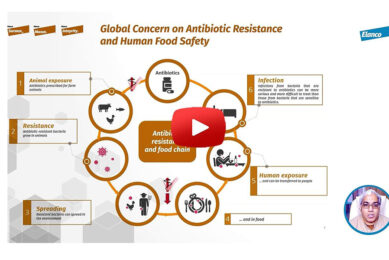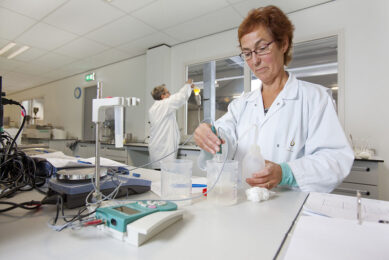Smart packaging to detect contaminated poultry
A partnership between two University of Rhode Island chemistry professors and a food safety company have come up with smart meat/poultry packaging.
Barcodes created by SIRA Technologies for use on refrigerated food products will incorporate an ink that will be rendered nearly invisible. When conditions indicative of contamination exist, the ink will turn red and the barcode will be rendered incapable of transmitting data when scanned.
Contaminated food
“Our partnership with SIRA Technologies is creating a smart packaging system that will prevent thousands of people from getting ill,” said Brett Lucht, who, along with colleague William Euler, developed the polymer that is added to the barcode ink to make it change colour.
Study
The URI researchers started studying thermochromic pigments – those that change colour at certain temperatures – a decade ago when a cookware company sought a polymer that could be added to its products to make them change colour when they were too hot to touch.
The heat-sensitive material they developed went from red to yellow when it reached 180 degrees Fahrenheit (the temperature at which a person would suffer a burn) and back to red when it cooled. That polymer generated interest from more than 100 companies that sought to incorporate it into dozens of different materials, from specialty fabrics to health care products. None of the companies, however, were willing to incur the added costs of refining the polymer for their specific uses.
However, when Lucht and Euler modified their discovery into an irreversible polymer – one that does not revert to its original colour after changing – SIRA Technologies took notice.
The Food Sentinel System
Bob Goldsmith, chief executive officer of the company, said that SIRA had developed a barcode that could sequester pathogens from animal blood and quantify the colony of pathogens with coloured organic beads until the colour emerges to activate the barcode and report the contamination. However, constant pathogenic mutations made it impossible to keep current with marketplace needs. The company’s subsequent search for an irreversible thermochromic ink led them to partner with URI in what is now trademarked and patented as The Food Sentinel System.
Expensive
A patent for URI’s thermochromic polymer was received in 2004, and additional patent applications are being pursued. Lucht has stated that other thermochromic indicators are commercially available, but they are expensive and they lack the archival feature required by regulatory agencies to track and trace products on a global scale. They also rely on human examination to judge whether the product has been rendered unsafe for consumption.
The cost of the SIRA Technologies barcode with the URI polymer will be less than four cents each.
“The licensing agreement we have in place with SIRA has the potential of generating hundreds of thousands of dollars – or more – in revenues to the university,” Lucht said. “If even 10 percent of the packages of chicken and milk and beef sold around the world have the SIRA barcode on them that would give a big boost to the URI research program. Only time will tell.”
Source: The University of Rhode Island













